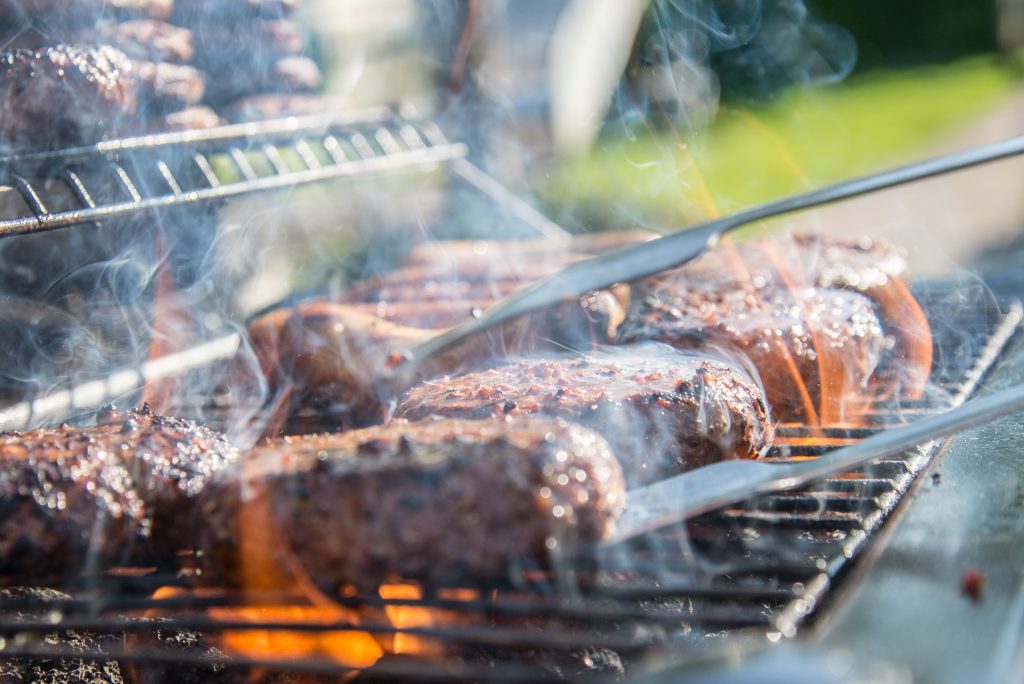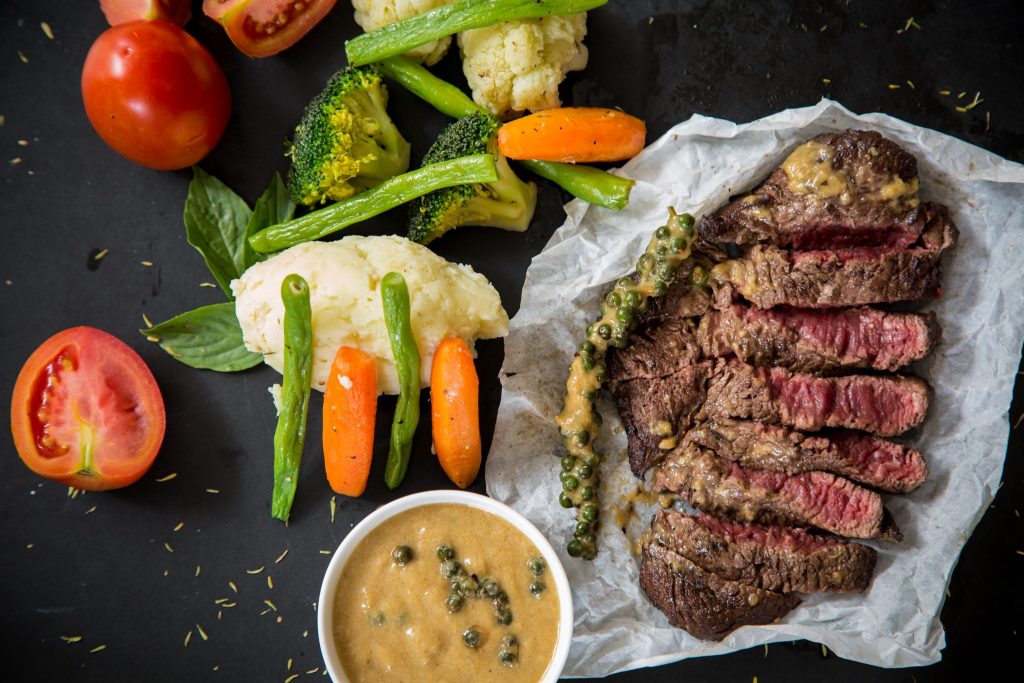
Issues related to the topic of storage and processing of fresh meat are very important. Improper preservation of this product can become the basis for serious digestive disorders and diseases.
What does quality meat look like?
The qualitative fresh products can be recognized by the state of its cut. In this case, consistency, color, and aroma are important. The meat should have a uniform color: without fragments of other shades and spots, and the color should correspond to the type:
- lamb has a natural color of dark red;
- beef is red, the calf is pink;
- pork should be pink;
- poultry – light meat with a pink tinge.
Veins and small patches of fat are also acceptable.
You can recognize a quality product by its fresh, pleasant, barely distinguishable aroma. Sour pungent odor indicates the freshness of the product.
Inclusions of white fatty layers that have a marble-like pattern at the cut point indicate high quality and freshness. The exception here is mutton fat: it may have a cream color.
The consistency of benign meat should be dense and elastic. When pressed, it should immediately return to its previous position (spring up). There should be no recesses at the pressure site.
There can be no mucus on the surface of a quality product (not to mention mold).
When choosing in a store, you need to make sure that there are no smudges at the bottom of the package. This is an indicator of a poor-quality product that was thawed several times thawed or is just stale.
Small ice crystals of pink color located around a piece of frozen meat also indicate temperature violations during storage.
Raw meat with a grayish tint definitely does not need to be purchased. Even if it has a fresh release date on its packaging. It can cause serious poisoning.
On the part of trade workers, there are many ways to give a beautiful outlook to expired products. For example, pink-colored areas of fat indicate steeping in potassium permanganate.
Proper Storage Of Meat

Store meat products in a cool place. There are several options for storing meat products, including freezing.
Given the quality and features of a product, the meat storage temperature is in the range from -30 ° C to + 5 ° C.
Cold Storage
It is allowed to store fresh meat in conditions from 0 ° C to + 5 ° C for no more than 2 to 4 days.
- This product cannot be kept in plastic bags; it will “suffocate”.
- The products are kept in cold water, in ceramic or enameled dishes, in a cool room. This method of storing fresh meat does not allow it to air-dry. And it helps to fully maintain useful properties.
- Minced meat and finely chopped slices should be used immediately after purchase or frozen. It should be borne in mind that the shelf life of veal (and other young animals) is shorter than beef.
When it is decided to cook the meal in the next two days, you can do it without freezing. You can store chilled meat in the refrigerator at a temperature of 0 ° C – -3 ° C for no more than two days.
The shelf life of chilled pork is 1 – 3 days, fresh poultry – 5 days.
In conditions of zero temperature, it is allowed to store chilled meat for up to 2 weeks.
Fresh chicken, turkey, and other poultry are kept in the cold for 2 days. After heat treatment, the shelf life is increased to 3 to 4 days.
Raw pork meat will remain fresh in the cold for 5 days, if it has already been cooked – only 4 days.
The storage of minced meat in the refrigerator is limited to 2 days.
Frozen at -3 ° C, the product is stored for 3 weeks (pork and beef) or 2 weeks (chicken (carcass)).
Storing minced meat without packaging in the cold is allowed for no more than 12 hours, offal – 6 hours.
Shelf Life In The Fridge
- 12 days for pork
- Beef – 16 days
- Chicken meat – not more than 4 days
The frozen product at a temperature of -12 -18 ° C
- Pork – 3-6 months
- Beef – 8-13 months
- Chicken meat – for about six months
Deep freeze
- Pork – a year and a half
- Beef – up to two years
- Chicken – no more than a year
Storage Without Freezing
It is best to store the meat in a food container with a lid on the top shelf of the refrigerator.
- The shelf life of boneless tenderloins is longer. It should also be borne in mind that a whole piece is more likely to maintain freshness than a piece cut into small parts.
- Raw meat should be stored in a refrigerator on a separate shelf, away from other products. This will allow it to maintain freshness longer.
- Storage in closed plastic packaging is undesirable. The product needs air access.
- Vinegar treatment will help to prolong freshness. Impregnate natural fabric in it and wrap a piece of meat with it. Such treatment does not allow bacteria to develop, which increases the shelf life by 2 to 3 days.
- Pork or veal is sprinkled with fresh lemon juice and put in a non-metallic dish without a lid. This can extend the shelf life by another couple of days.
- There is another storage option: wrap the eat in a piece of paper. And after that, wrap it with a damp cloth. This will increase the freshness of the product by 2 to 3 days. The cloth must first be soaked in water with plenty of salt.
Freezer Storage
Freezing is a good opportunity to increase the shelf life of meat. True though, that when defrosting, it loses some qualities.
The main thing, when freezing, is not to leave air in the bag. It must be removed as much as possible (it is better to use a vacuum packer). The bag is sealed, then wrapped with foil and placed in the freezer.
Large parts are wrapped with foil so that they do not freeze to each other.
Each piece of meat is signed (with a marker on the package). With this method, the remaining storage time can be visible.
Poultry carcasses will last about 1 year, pieces – 9 months.
Large pieces are stored in the freezer for 6 – 12 months, cut red meat – from 4 months up to six months.
Various types of minced meat – 4 months.
After heat treatment, any meat is stored for 2-6 months.
How Long Can Boiled Meat Be Stored
Boiled meat is stored in the refrigerator for no more than 2 days, in the freezer for no more than a month (depending on how it was processed).
Jellied meat is kept in a cool place from 5 days to 1 week (depending on the amount of salt).
When the meat has been thawed, it should be cooked no later than a day. It is no longer possible to freeze it again (it will quickly deteriorate).
Marinated Meat
The shelf life of pickled meat will depend on the additives used in its preparation.
Marinade, the basis of which is fermented milk products, will allow storing future barbecue for 1 – 2 days. Mayonnaise will extend the shelf life up to 5 days. Wine, vinegar, vodka additives in the marinade increase the shelf life by another 5 days.
To preserve the maximum amount of vitamins and minerals that meat products are so rich in, it is necessary, by all rules, to organize the storage of fresh meat at home following the recommendations given in this article.